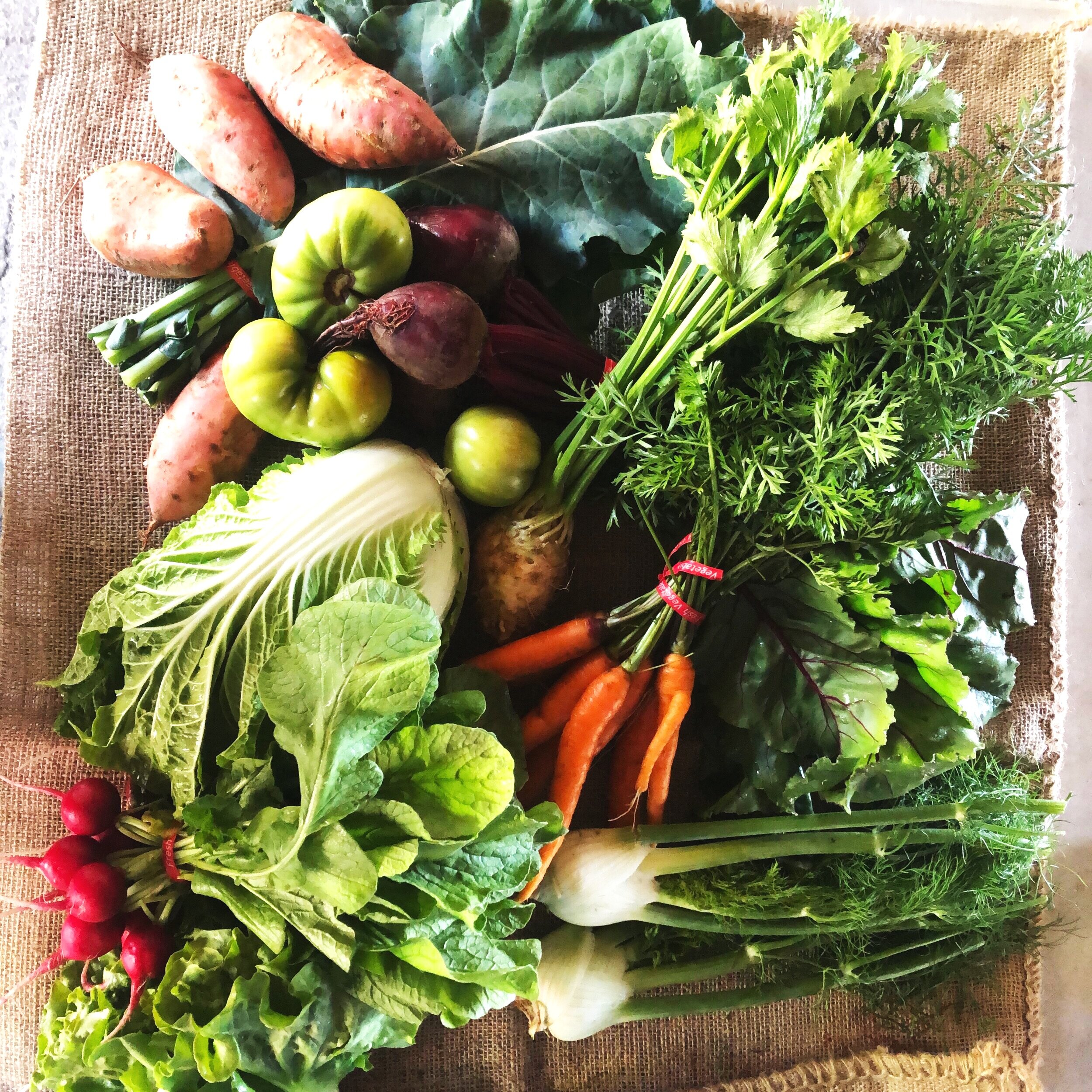High quality food is a human right.
Our CSA’s Food Access Fund and sliding scale model provide no-cost or subsidized vegetables to low-income households, including communities of color, LGBTQIA+ folks, seniors, families with young children, and people living with serious health concerns (such as HIV/AIDS, diabetes and cancer).
We realize that this is somewhat of a band-aid approach to systemic inequity, but right now we see this as an immediate way to reach those who want fresh produce, yet do not have the funds to buy it.
“There’s no better feeling than being able to feed your family whole nourishing meals. ”
Apply
If you cannot afford to purchase a share on our sliding scale (the lower income level offers a 20% discount), then please submit a request form to apply for a solidarity share.
Contribute
Your tax-deductible donation goes towards someone’s CSA share who could not otherwise afford it. Thank you for helping your community access fresh, local produce!
“I would like to express my gratitude for your solidarity shares. They make such a difference when otherwise it is so difficult to have access to local fresh produce. You make it seem like the world is not just an unjust place. It means so much for me. Thank you!”
It’s all connected.
When you contribute to our Food Access initiative, you’re not only feeding community members in need, but also supporting the sustainable farming practices behind that food.
Amidst an escalating climate crisis, we take our responsibility as farmers and land stewards seriously. Industrial agriculture is responsible for 24% of global greenhouse gas emissions. On the other hand, small scale, sustainable farms like ours have the power to reverse this harm through regenerative agriculture practices that sequester carbon, rebuild soil health and increase biodiversity.
For example, next season we plan to cover crop 90% of our fields (used to restore and “feed” the soil), cultivate a new perennial plot (a 10X increase in our perennial production), utilize interplanting to promote beneficial pollinators, and add an additional 20 cubic yards of compost.
Each of these choices require planning, hard labor and significant financial investment. As a result, our vegetables do cost more than those grown conventionally on large scale farms without regard for the soil.




